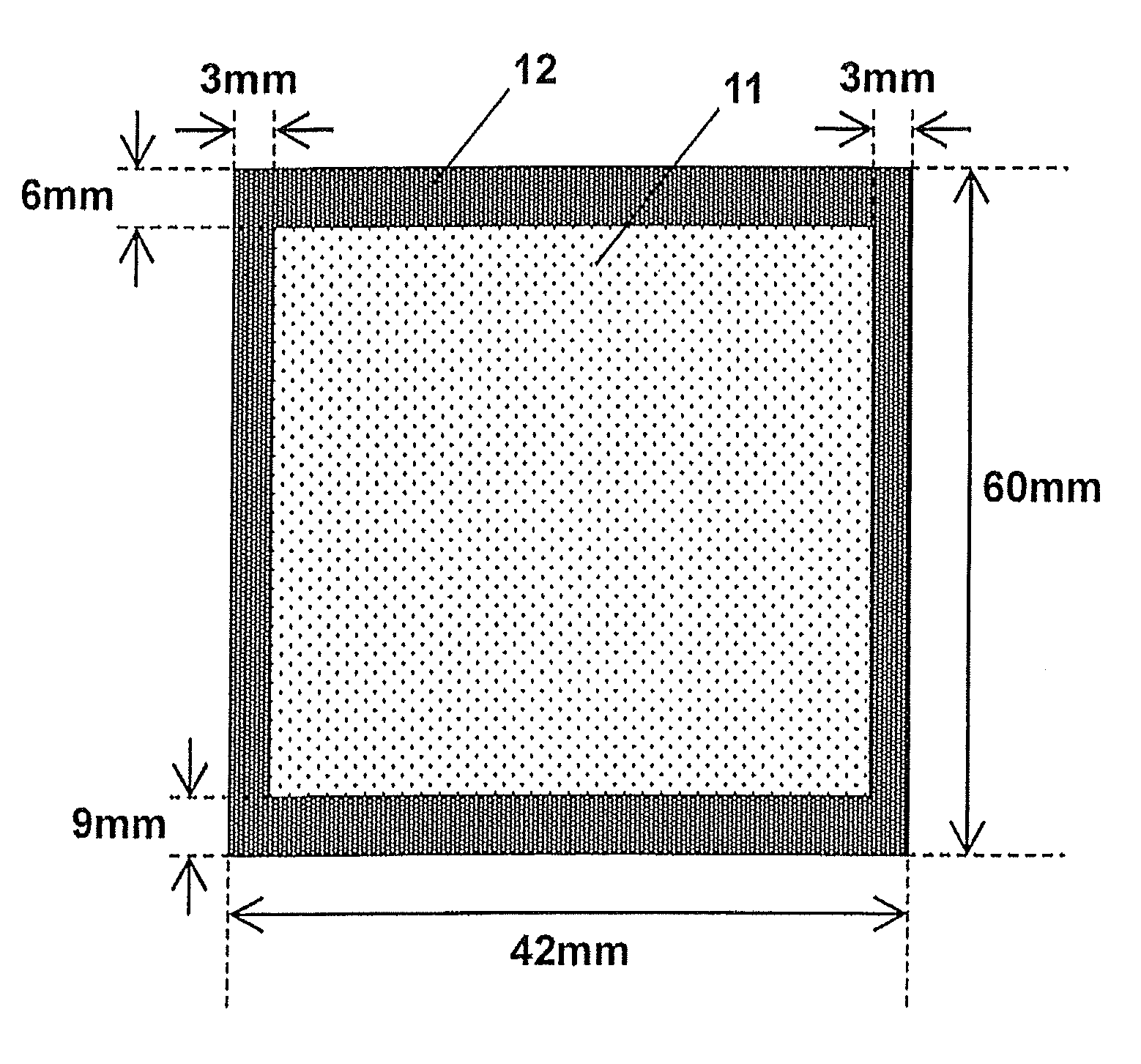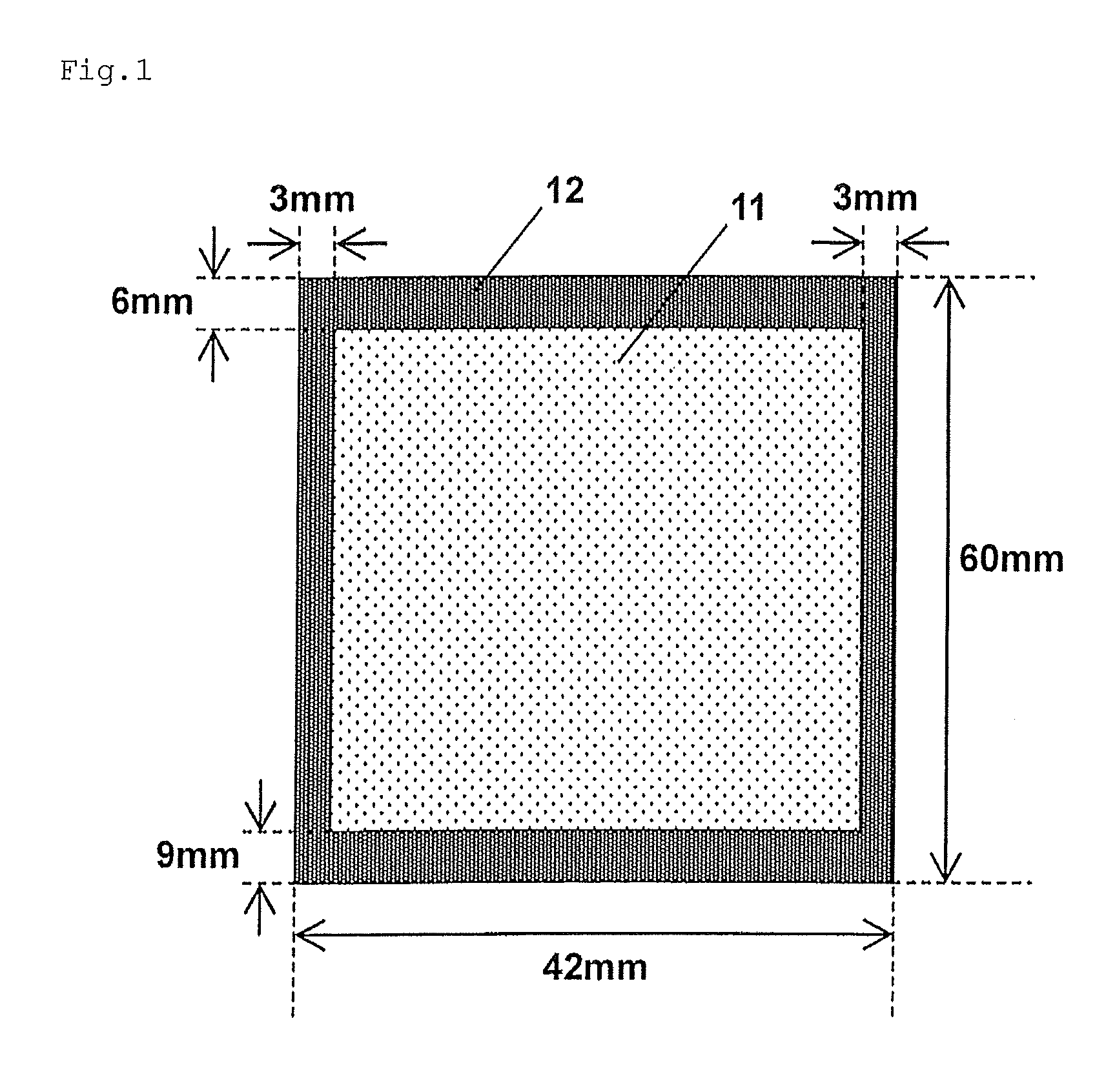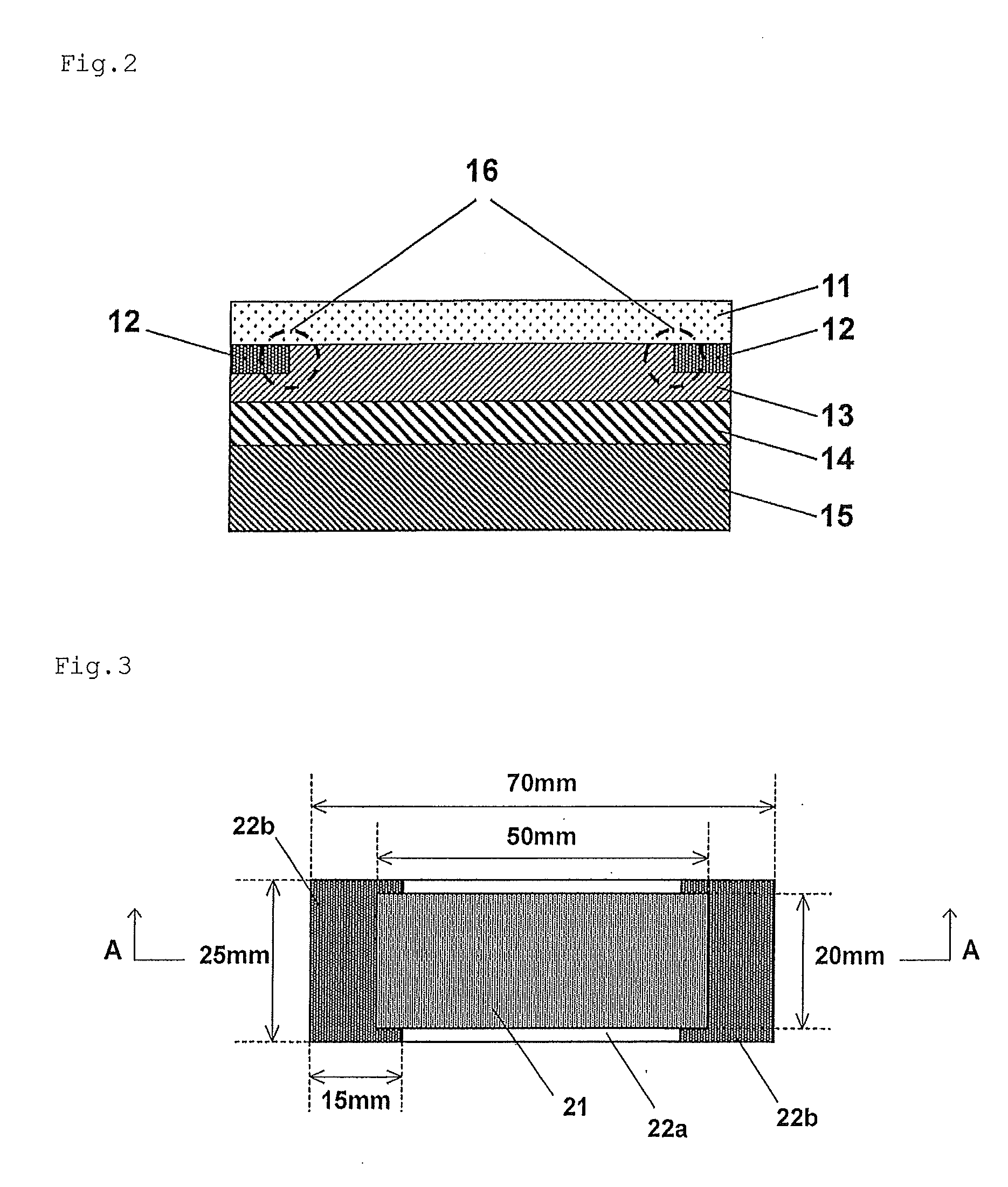Optical pressure-sensitive adhesive sheet
- Summary
- Abstract
- Description
- Claims
- Application Information
AI Technical Summary
Benefits of technology
Problems solved by technology
Method used
Image
Examples
example 1
[0164]In a separable flask were placed 69.7 parts by weight of 2-ethylhexyl acrylate (2EHA), 10 parts by weight of 2-methoxyethyl acrylate (MEA), 13 parts by weight of 2-hydroxyethyl acrylate (2HEA), 6 parts by weight of N-vinyl-2-pyrrolidone (NVP), and 1.3 parts by weight of N-hydroxyethylacrylamide (HEAA) as monomer components, 0.1 part by weight of 2,2′-azobisisobutyronitrile as a polymerization initiator, and 200 parts by weight of ethyl acetate as a polymerization solvent, followed by stirring for one hour with the introduction of nitrogen gas. After removing oxygen from the polymerization system in this manner, the mixture was raised in temperature to 63° C., reacted for 10 hours, diluted with ethyl acetate, and thereby yielded an acrylic polymer solution having a solids concentration of 30 percent by weight.
[0165]A pressure-sensitive adhesive composition (solution) was prepared by adding, to 100 parts by weight of the acrylic polymer, 0.2 part by weight of an isocyanate cross...
example 2
[0167]A 112-μm thick double-coated pressure-sensitive adhesive sheet was obtained by the procedure of Example 1, except for using, as monomer components, 69.7 parts by weight of n-butyl acrylate (BA), 10 parts by weight of 2-methoxyethyl acrylate (MEA), 13 parts by weight of 2-hydroxyethyl acrylate (2HEA), 6 parts by weight of N-vinyl-2-pyrrolidone (NVP), and 1.3 parts by weight of N-hydroxyethylacrylamide (HEAA); not using the silane coupling agent “KBM-403;” and using, as a plastic film substrate, a 1282 m thick PET film (trade name “LUMIRROR F71” supplied by Toray Industries Inc., having a total light transmittance of 88.9%, an internal haze of 1.2%, and a b* value of 0.02), as indicated in Table 1.
example 3
[0168]A 15082 m thick double-coated pressure-sensitive adhesive sheet was obtained by the procedure of Example 1, except for using, as monomer components, 75 parts by weight of 2-ethylhexyl acrylate (2EHA), 11.5 parts by weight of 2-methoxyethyl acrylate (MEA), 5 parts by weight of 2-hydroxyethyl acrylate (2HEA), 7 parts by weight of N-vinyl-2-pyrrolidone (NVP), and 1.5 parts by weight of N-hydroxyethylacrylamide (HEAA); and using, as a plastic film substrate, a 5082 m thick PET film (trade name “DIAFOIL T600” supplied by Mitsubishi Plastics, Inc., having a total light transmittance of 89.1%, an internal haze of 1.0%, and a b* value of 0.12), as indicated in Table 1.
PUM
| Property | Measurement | Unit |
|---|---|---|
| Temperature | aaaaa | aaaaa |
| Temperature | aaaaa | aaaaa |
| Temperature | aaaaa | aaaaa |
Abstract
Description
Claims
Application Information
 Login to View More
Login to View More - R&D
- Intellectual Property
- Life Sciences
- Materials
- Tech Scout
- Unparalleled Data Quality
- Higher Quality Content
- 60% Fewer Hallucinations
Browse by: Latest US Patents, China's latest patents, Technical Efficacy Thesaurus, Application Domain, Technology Topic, Popular Technical Reports.
© 2025 PatSnap. All rights reserved.Legal|Privacy policy|Modern Slavery Act Transparency Statement|Sitemap|About US| Contact US: help@patsnap.com



